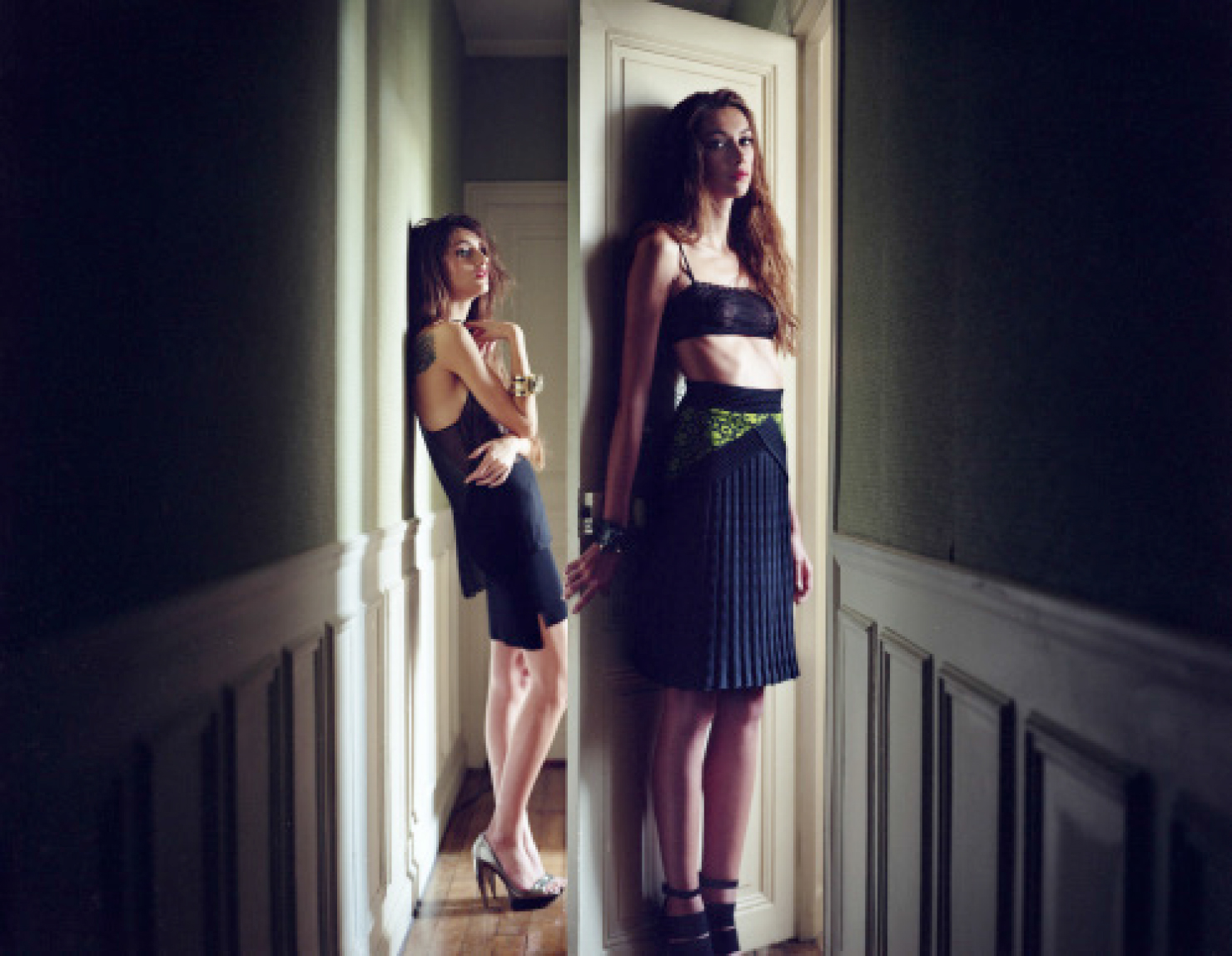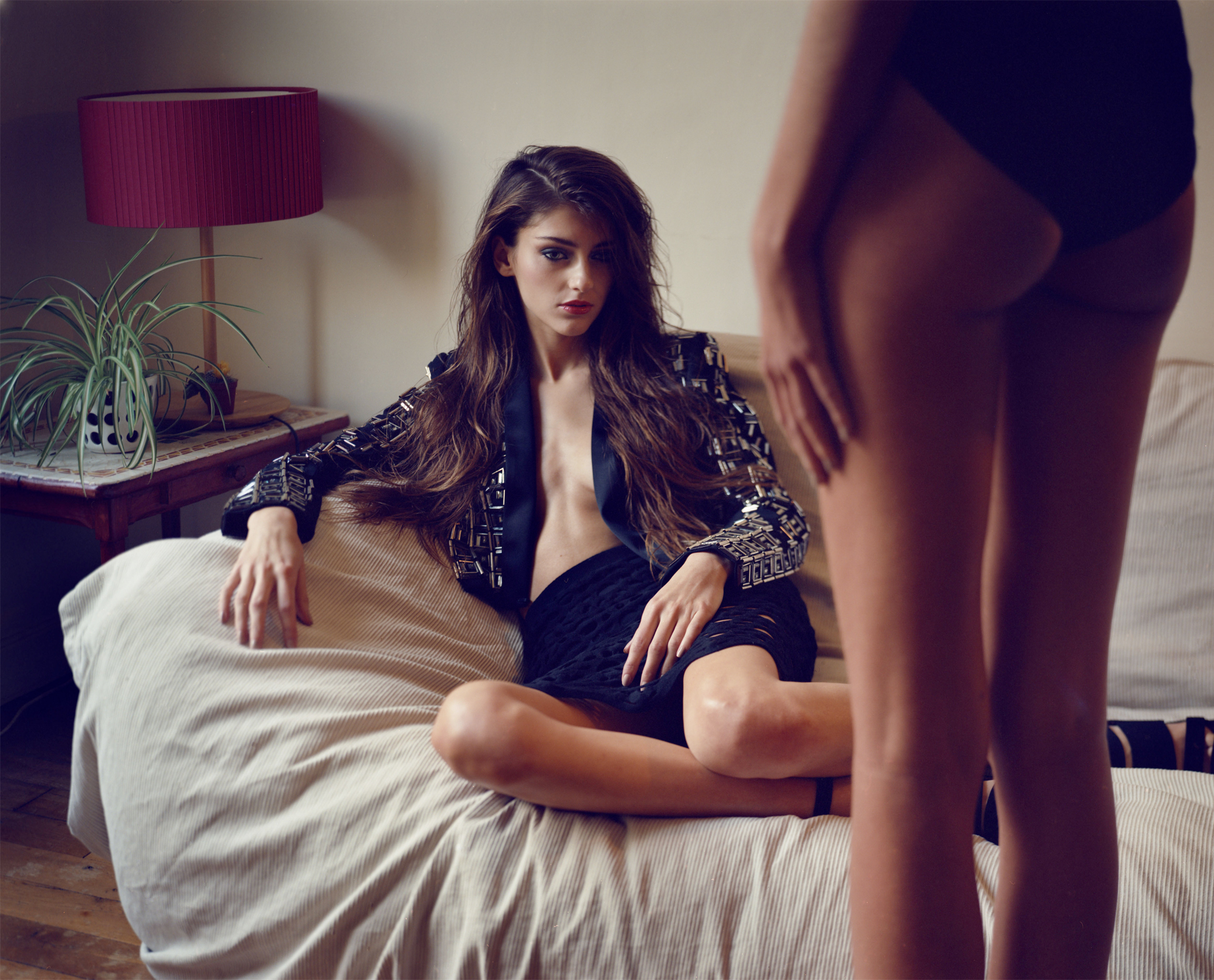

[](#)[](#)
Anarchy is Best in the Springtime: Pièce d’Anarchive
The Young Designers Champion and Challenge Fine Tradition
Maison Michel, Maison Lesage or Causse gloves: as French luxury houses are actively protecting age-old métiers d’art, young label Pièce d’Anarchive has found its own, unique way of perpetuating couture tradition by subtly turning it on its head.
Meet founding trio, sisters Priscilla and Déborah Royer and their friend Virginie Muys. One glance at them—geared up in hoodies under which peak the finest of silk and lurex knit dresses (which, I was later to find out, are made in the same atelier as Alaïa) and supple calf-skin tote bags used to carry a Vespa helmet—will inform you of their cheeky attitude towards both Parisian femininity and tradition.
Founded in 2011 and awarded this year’s prestigious ANDAM prize for young talents, the label’s mission is best summed up in its name. While ‘Pièce’ suggests a collectible, something precious, ‘Anarchive’ is a contraction of the words ‘archive’ and ‘anarchy’, a desire to honor and simultaneously hijack tradition. “We want to create something exquisitely made, but which pushes boundaries,” said Déborah, adding, “We want to find a balance between chaos and order”.
Produced in the same ateliers as the country’s leading couture houses, their poetically anarchic clothes include flipped over cloque jacquard, neon guipure, destructed sleeves, off-center collars.
Each collection is peppered with sportswear references—a novelty for the French, somewhat more classical silhouette—season after season: knit varsity jacket or leather baseball cap rub shoulders with pencil skirts and boxy shift dresses. “We craved pragmatic elegance,” said Priscilla, “clothes that you can roll into a ball and throw into your bag.”
Raised in Reims, far from the capital, the two sisters’ earliest fashion memories include inventing outfits for their youngest sisters, some of which entirely composed of knotted bandanas; Priscilla’s years spent learning ballet at a young age brought an ergonomic whiff to her taste. After graduating from both Paris’s Studio Berçot and London’s Central Saint Martins, Priscilla went on to work for Vivienne Westwood for four years, eventually running her Red Label. There, she witnessed Dame Westwood’s iconoclastic approach to British heritage.
Together with her sister, they decided to set up a label—a long-term dream—where she would be in charge of the design. Deborah would be in charge of the production and relation to artisans. With her background in perfume development, she was interested in the intimate relation between one’s clothes and body: “comfort is vital for me,” she says, not unlike perfume. “Clothes are like a second skin.” Last but not least, their friend Virginie Muys, with a background in event management, joined the group to look after the communications.
With a small but organized team, a name, and a solid set of sketches in hand, they approached ateliers all over the country out of the blue. Slowly but surely, they gained their trust. “Although they have illustrious clients, they felt charmed by the name, the concept, and also felt reassured to see we had a tiny but solid structure in place,” explains Priscilla.
The first collection, Spring-Summer 2012, was composed entirely of knits—think light cotton, lurex, silk, square silhouettes, dropped waists, and a recurrent play on texture. The second collection blended elements of leather, wool, and heavier knits for winter and subtle sportswear detailing.
The latest, full blown collection sees added chaine et trame to its resume and includes plenty of guipure experimentation and pleated chiffon for a game of transparency and length, as well as Panama hats produced by none other than Homero Ortega. Inspired by the ballet ‘The Vertiginous Thrill of Exactitude’ by William Forsythe, the collection exudes a sense of precision and dexterity.
“We want to restore a real meaning in purchase—know what we are buying and why, buy less but better,” said Déborah of their small, numbered series.
Moving away from a classical, collection-based routine, the brand’s communication is introduced by an Anja Aronowsky-Cronberg poem and each season is referred to in terms of chapters. “We are telling a story that we keep building upon,” says Priscilla.
And that’s far from all. No less than Paolo Roversi shot their collection, which was modeled by Natalia Vodianova, and the latest by Arizona Muse. An accidental meeting led them to meet the photographer at an early stage of their development, who was charmed by their approach. The trio believe Roversi’s style works perfectly for the clothes: “his photos tell a frill-free story, just like our clothes,” said Deborah. As for Arizona Muse, “she is both hard and soft, has an ambiguous edge.”
Not bad for a first start. “We’re developing, very, very slowly, focusing on the next few steps rather than a full blown brand. Let’s see where the future takes us,” Priscilla teases.
